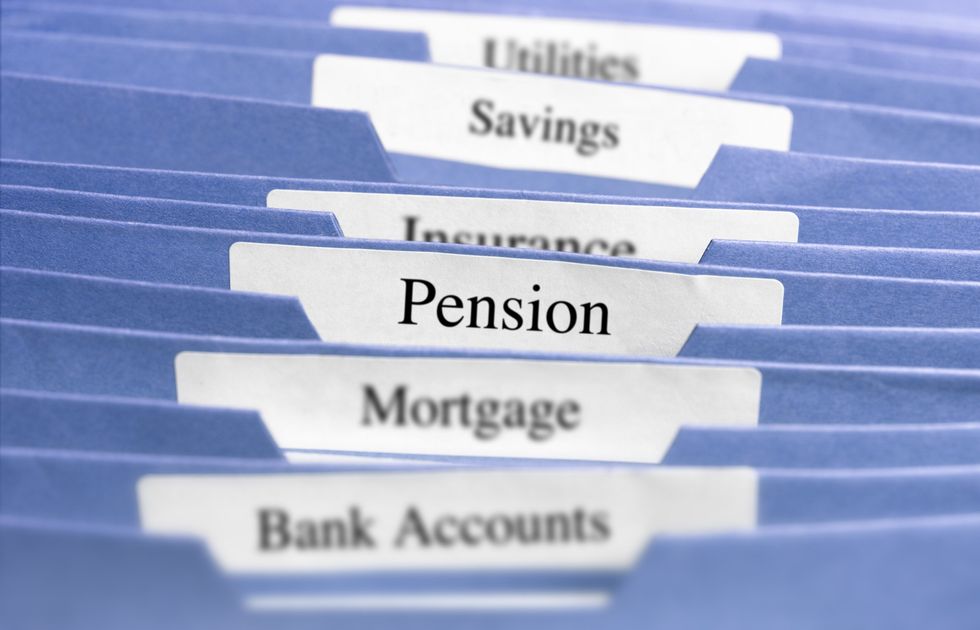Only 38 per cent of households are on track for a moderate retirement income
GETTY
Only 38 per cent of households are on track for a moderate retirement income
Don't Miss
Most Read
Trending on GB News
New research has revealed the true cost of retirement and has suggested that just 38 per cent of savers are on track to have a moderate income pot.
Once people know how much they need, it will help them plan ahead and meet their retirement goals.
New data from Hargreaves Lansdowne (HL) found that retirement costs soared by a whopping 34.3 per cent per year for a single person and 26.8 per cent for a couple.
The Pensions and Lifetime Savings Association (PLSA) provide their own comfortable retirement figures however HL used headline inflation data to boost the previously used 2023 PLSA Retirement Income Standards by 7.3 per cent. This is a direct reflection of increases in the costs of goods and services during that period.
HL data is an alternative approach to the more recent PLSA Retirement Income Standard which has included more aspirational aspects of retirement lifestyles such as extra days out with family.
More aspirational areas such as the desire to spend more time with family post-pandemic were added into their calculations, which led to their retirement costs soaring to £31,300 per year for a single person and £43,000 for a couple.
 The average retiree currently needs around £400,000 in their pension to fund a moderately comfortable retirement for 20 yearsGetty
The average retiree currently needs around £400,000 in their pension to fund a moderately comfortable retirement for 20 yearsGettyAs the cost of living crisis continues, Britons are urged to plan their retirement ahead of time so they have enough time to save.
Helen Morrissey, head of retirement analysis at Hargreaves Lansdown said: "If you are wondering how much you need to live on in retirement then the latest HL Savings and Resilience Barometer data suggests you will need around £25,000 per year if you are single and £36,480 combined if you are in a couple."
She explained that working out how to handle the inflation shock presents an opportunity for the PLSA and industry to engage on what is the best way to help people measure their retirement income needs.
The retirement expert continued: "Even adopting a smaller increase exposes the huge challenges people face in planning for retirement. Only 38 per cent of households are on track for a moderate income in retirement - there is clearly much work still to be done to improve pension adequacy."
The full new state pension is currently £11,500 per person and can contribute a significant amount towards the annual income needed.
However, millions do not have a sufficiently good private pension or savings to make up the gap between the state pension and what they need.
Around 12.2 million households don’t have the pension savings required to retire with a moderate living standard. However, within this group, almost seven million are not behind with debt repayments or bills and have excess cash or investments that could be used to boost their pensions or private pensions (SIPPs).
"It’s a simple shift that could see 1.8 million households passing the threshold for a moderate retirement income and securing their financial future, while the outlook for the remaining households would be significantly improved."
Other gaps which could see households passing the threshold for a moderate retirement income could be filled with the appropriate Government reforms such as the Auto-Enrolment Extension Bill.
As soon as a worker turns 18, they will be able to save money in their pensions, which will increase their retirement pots over time.
Another option Morrissey explained could explore how to motivate employers to contribute more to employee pensions.
For instance, employers could increase contributions for employees who voluntarily put more in themselves.
Morrissey added: "The self-employed also need to be considered. They are a group ignored by auto-enrolment and less likely to use pensions due to their perceived inflexibility.
"A Lifetime ISA could really help this group with the 25 per cent Government bonus on contributions of up to £4,000 per year acting as a real incentive with any income taken tax-free.
"However, the 25 per cent exit penalty for early access not only takes away the effect of this bonus but a chunk of hard-earned savings too and we have called on Government to reduce this to 20 per cent to remove this issue and ensure people aren’t penalised for trying to do the right thing.
"We also want to see the upper age limit extended from 40 to 55 to help those who become self-employed later in life!"







